Abstract
The mouse-protective activity of Erysipelothrix rhusiopathiae culture supernatant fluids exists in a polydisperse form, ranging in density from aggregates which sediment at 10,000 × g for 3 hr to soluble units which will not sediment at 198,000 × g for 12 hr. A partially purified protective antigen has been isolated from the aggregates sedimented from a concentrate of the culture supernatant fluid at 20,000 × g for 3 hr. These aggregates contained the major protective antigen or antigens of E. rhusiopathiae, since, in addition to inducing active immunity, they adsorbed essentially all of the passively protecting antibody from rabbit antiserum produced by immunization with whole culture. The protective activity in these aggregates was destroyed by trypsin and greatly diminished by muramidase and heating at 64 C, but was not affected by lipase or ribonuclease.
Full text
PDF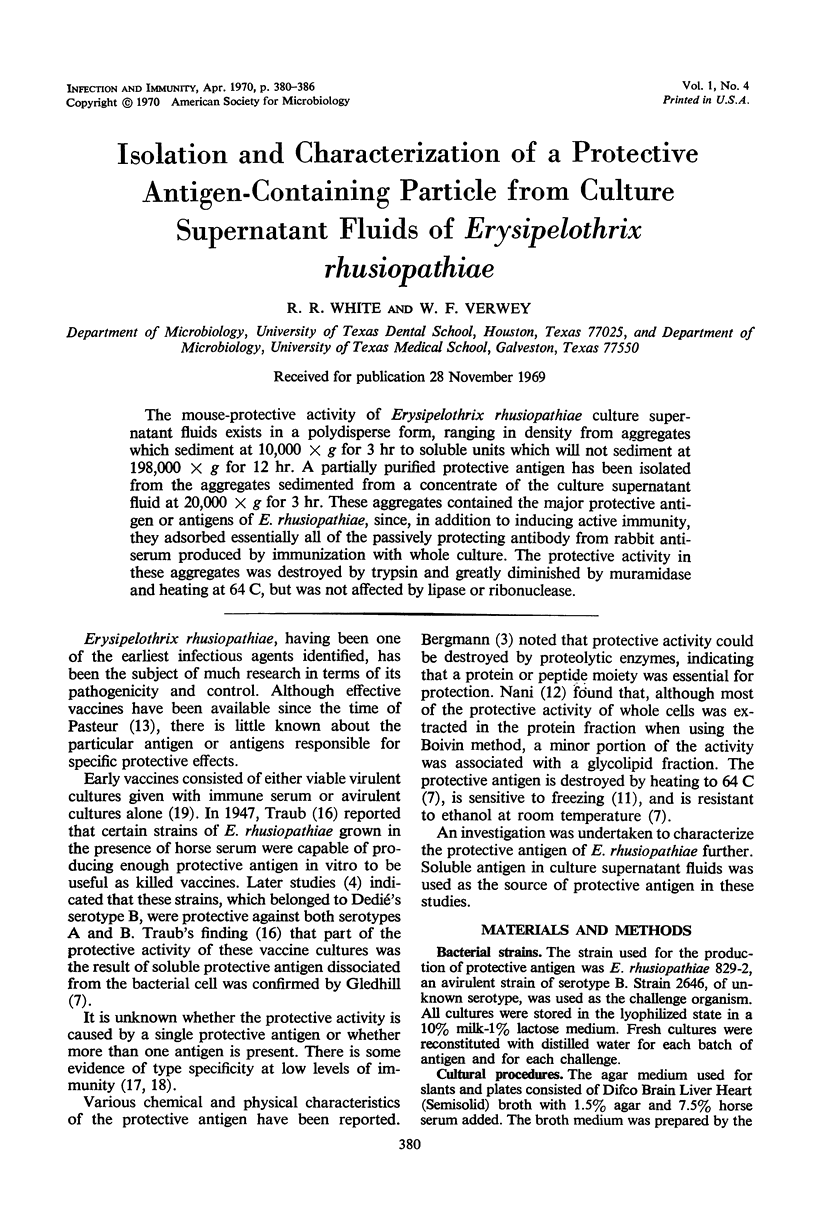
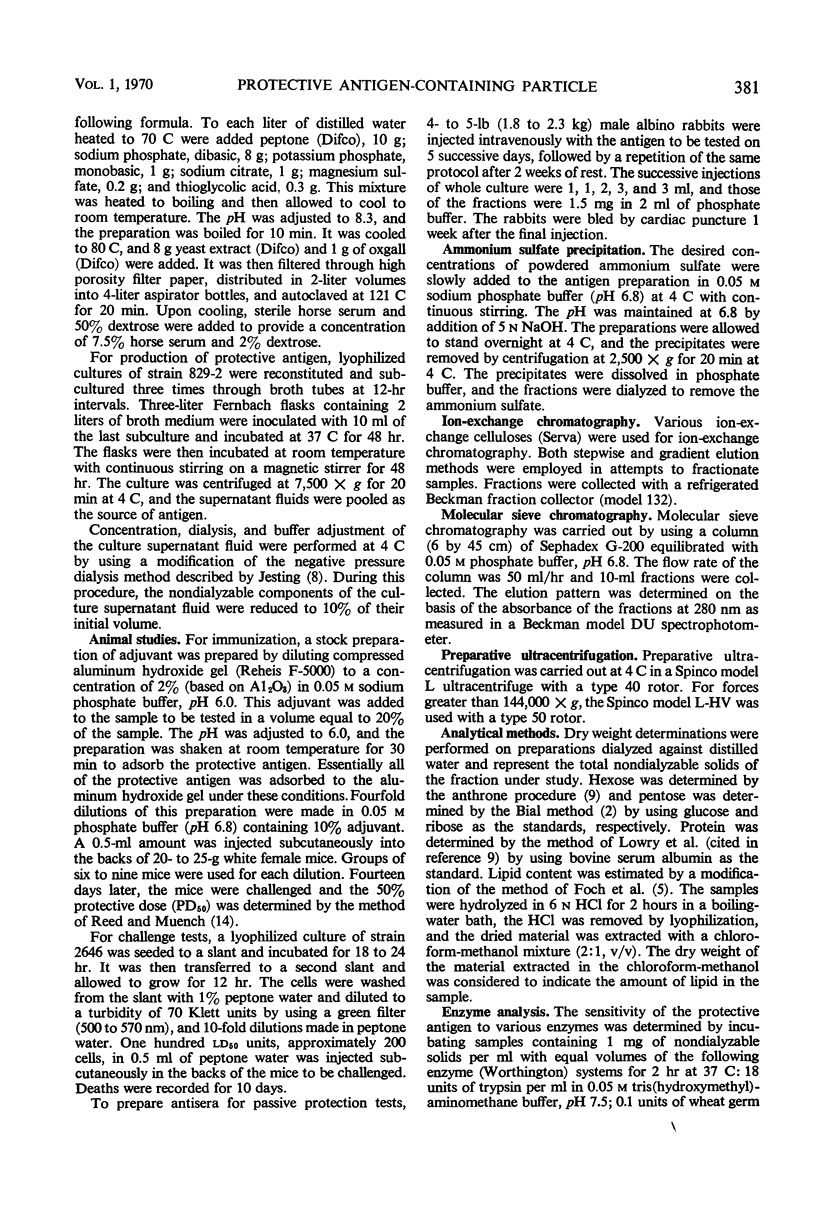
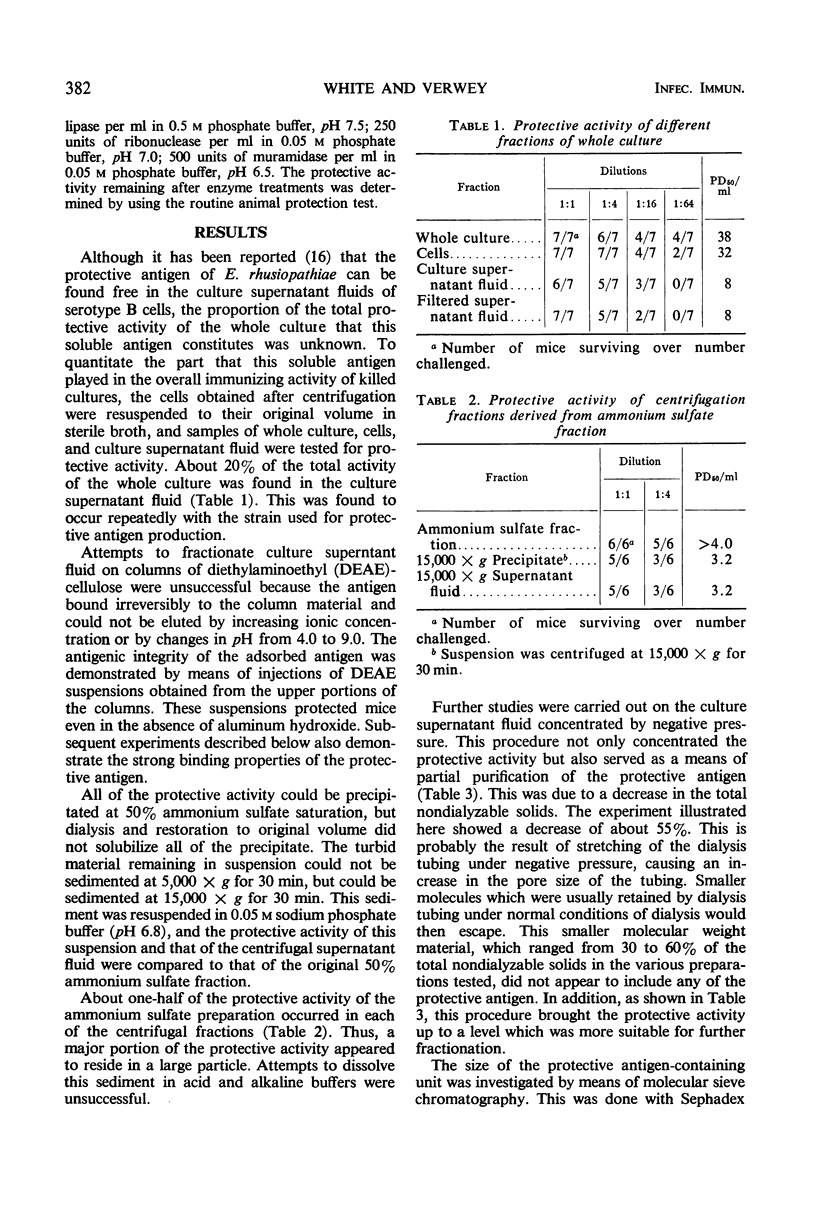
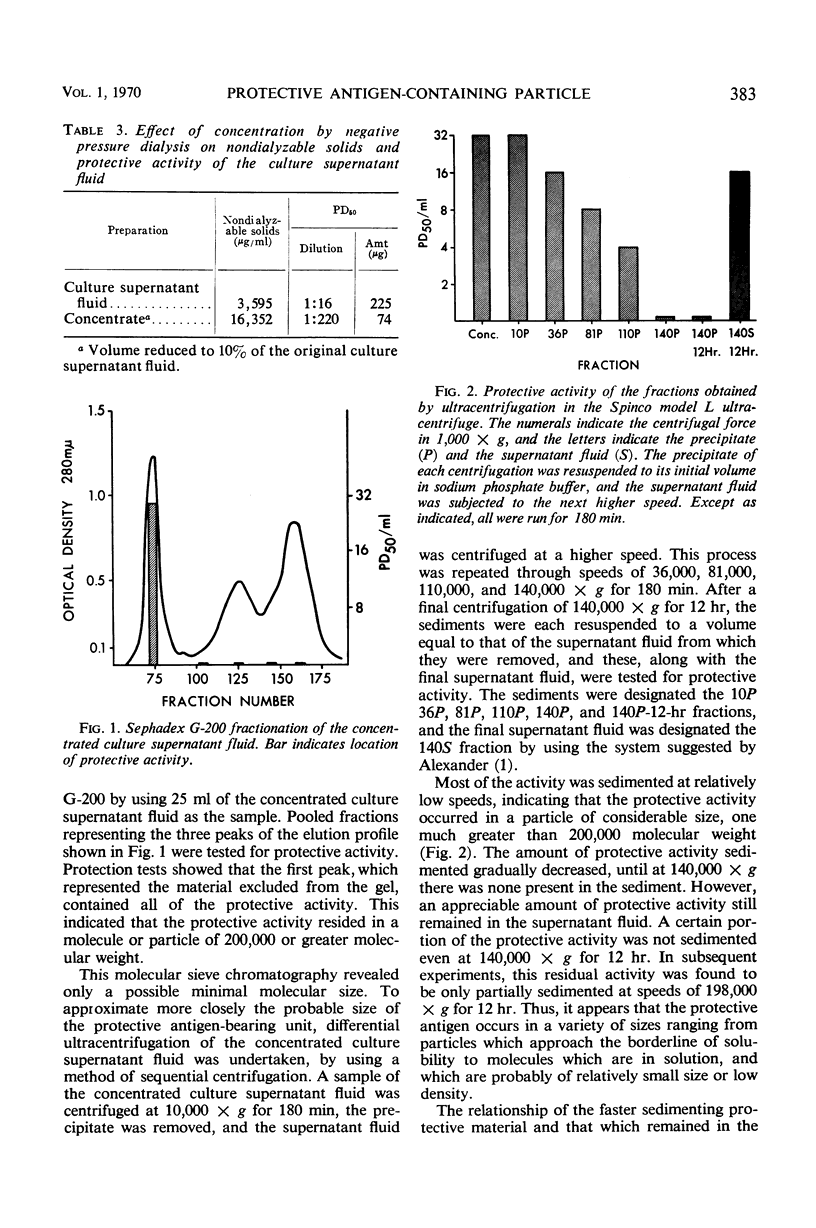
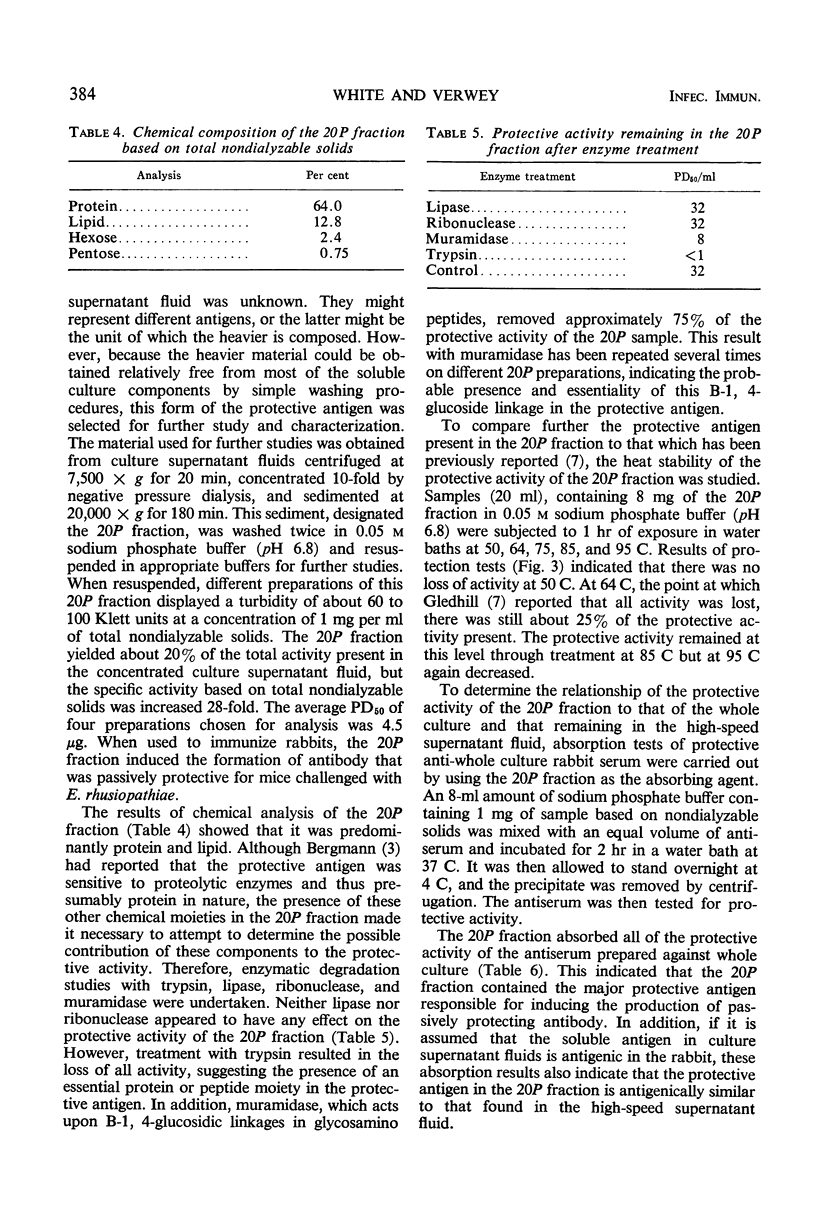
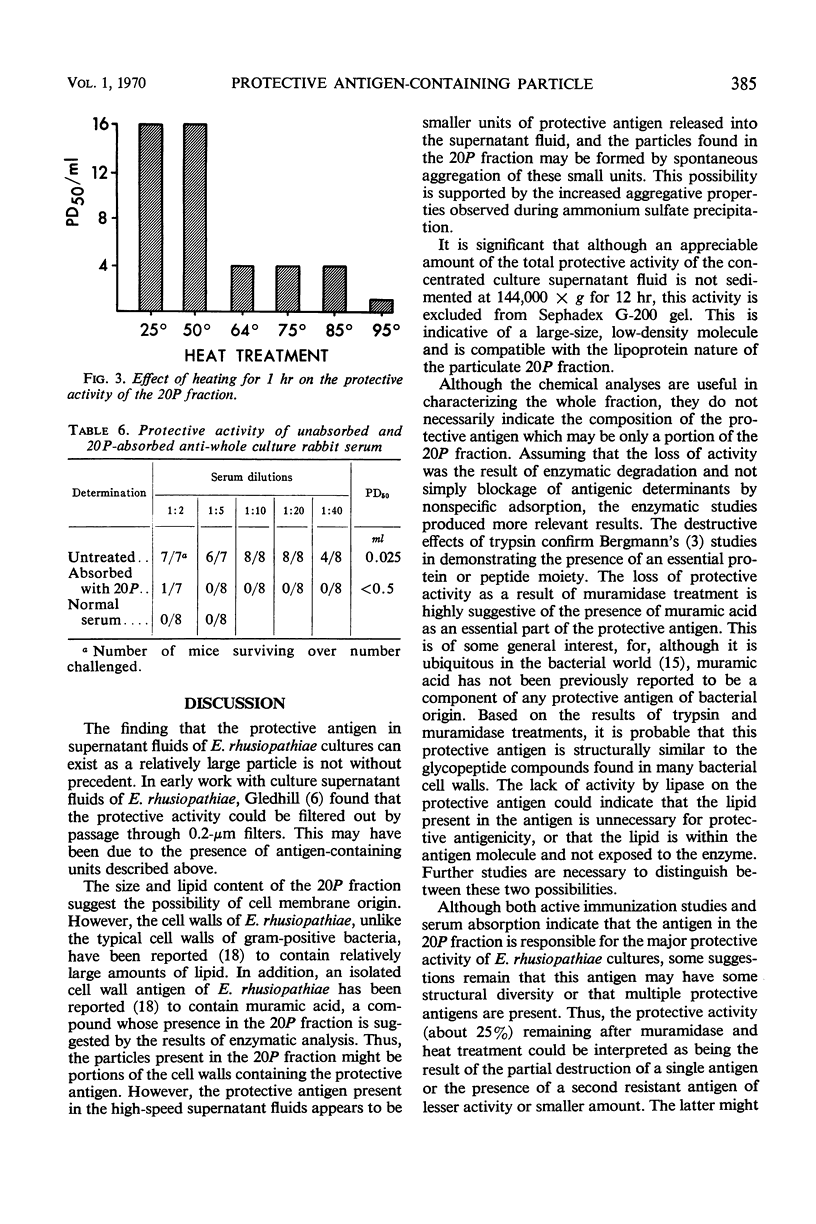
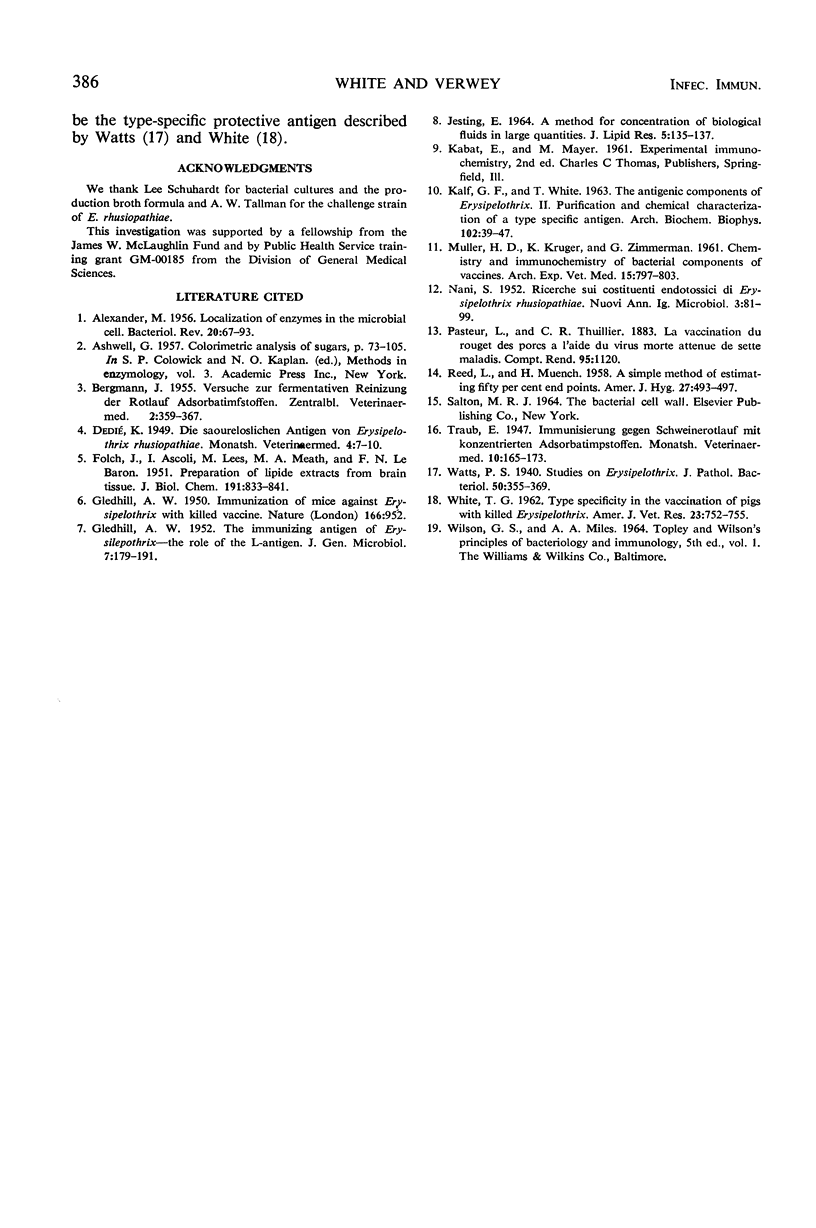
Selected References
These references are in PubMed. This may not be the complete list of references from this article.
- ALEXANDER M. Localization of enzymes in the microbial cell. Bacteriol Rev. 1956 Jun;20(2):67–93. doi: 10.1128/br.20.2.67-93.1956. [DOI] [PMC free article] [PubMed] [Google Scholar]
- FOLCH J., ASCOLI I., LEES M., MEATH J. A., LeBARON N. Preparation of lipide extracts from brain tissue. J Biol Chem. 1951 Aug;191(2):833–841. [PubMed] [Google Scholar]
- GLEDHILL A. W. Immunization against Erysipelothrix rhusiopathiae with killed vaccine. Nature. 1950 Dec 2;166(4231):952–952. doi: 10.1038/166952a0. [DOI] [PubMed] [Google Scholar]
- GLEDHILL A. W. The immunizing antigens of Erysipelothrix rhusiopathiae; the role of the L-antigen. J Gen Microbiol. 1952 Aug;7(1-2):179–191. doi: 10.1099/00221287-7-1-2-179. [DOI] [PubMed] [Google Scholar]
- JESTING E. A METHOD FOR CONCENTRATION OF BIOLOGICAL FLUIDS IN LARGE QUANTITIES. J Lipid Res. 1964 Jan;5:135–137. [PubMed] [Google Scholar]
- KALF G. F., WHITE T. G. The antigenic components of Erysipelothrix rhusiopathiae. II. Purification and chemical characterization of a type-specific antigen. Arch Biochem Biophys. 1963 Jul;102:39–47. doi: 10.1016/0003-9861(63)90317-5. [DOI] [PubMed] [Google Scholar]
- WHITE T. G. Type specificity in the vaccination of pigs with killed Erysipelothrix rhusiopathiae. Am J Vet Res. 1962 Jul;23:752–755. [PubMed] [Google Scholar]


